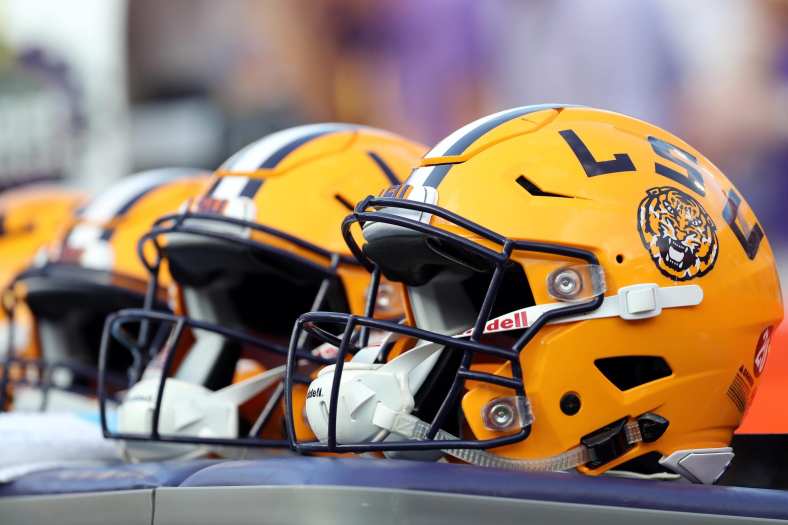
As the scheduled kickoff for college football season rapidly approaches, things are looking dim for the nation’s biggest amateur sport. The Big Ten and PAC 12 have eliminated all cross-conference games. The Ivy League has gone one step further by canceling all fall sports, with no exception for football.
While the Ivy League is the first DI conference to take this ultimate move, it may not be the last. It was also the first to cancel a postseason basketball tournament when the COVID-19 pandemic began in the United States, then others quickly followed. It’s possible the academic elites on the East Coast may again be the first to see the writing on the wall.
After all, college football comes with a multitude of COVID-19 risk factors. Obviously, games are an unavoidable transmission risk. But so are travelling, team workouts and even film sessions. Unless every player—easily over 100 per school—takes all precautions, outbreaks are almost inevitable. Even now programs are already showing they are unable to keep their players safe from COVID-19. Here are five DI programs that have particularly struggled with this task throughout the summer.
LSU Tigers
The reigning national champions have had arguably the most embarrassing experience with the COVID-19 pandemic. Although they declined to release specific numbers, at least 30 members of the Tigers roster were quarantined in late June.
What’s particularly disappointing for the national champs is how preventable some of their problems were. Some of the players in quarantine had been out at a string of bars known as “Tigerland,” which became the center of an outbreak.
This has been interpreted as a good thing, as LSU’s cases were not traced back to team events. However, the fact that Tiger players are showing such carelessness does not bode well for future spread-prevention attempts.
Clemson Tigers
Considered to be the most talented team heading into the 2020 season, the Tigers have been one fo the worst in containing the virus. When Clemson began returning student-athletes and athletics staff to campus, the university conducted one round of 315 tests. Of those , 28 were positive. 23 of the confirmed cases belonged to individuals associated with the football program: 21 players and two members of staff.
Clemson policy requires that anyone who tests positive isolate for 10 days, and anyone who had contact with an infected individual isolate for two weeks. However, this was clearly not enough to stop the virus from spreading throughout the football team. In another round of testing two weeks ago, 14 more players tested positive.
This result brings the total to 37 players, nearly a third of the roster, confirmed positive within just a month of returning to campus. Despite these results, Clemson is continuing with voluntary workouts. Hopefully, more of the team’s players stop by the team’s store and start wearing their $14.99 officially branded “face coverings.”
North Carolina Tar Heels
This one is particularly sad for me as I have been banging the Tar Heels drum for a while now. However, stud quarterback Sam Howell and company may find their breakout 2020 season in jeopardy.
Just a few days ago, UNC announced that 37 individuals from its athletics programs had tested positive for COVID-19. To their credit, the Tar Heels reacted by pausing voluntary football workouts for at least a week.
While pausing workouts is undoubtedly the right move, the Tar Heels’ decision makers are now in a sticky situation. If they don’t continue after a week, they’ll find themselves behind other programs (like ACC rival Clemson) that are attempting to power through. If they do, they’re likely to face another outbreak.
Texas Longhorns
On June 15, Texas, along with other Big 12 schools, was permitted to resume voluntary workouts. Just four days later, 27% of the roster was in quarantine. In total, thirteen players tested positive while an additional 10 were isolated thanks to contact tracing.
Since these early results, the Longhorns have not released any more information. They have, however, continued with voluntary workouts. Meanwhile, Head Coach Tom Herman filmed a PSA for the Texas governor urging Texans to use the “Power of Teamwork” to defeat COVID-19.
However as the state reports over 50,000 new cases in the last week and may be canceling high school football, the Longhorns situation is still precarious. Let’s hope no news is good news, but it wouldn’t be surprising if the virus has continued to spread throughout the roster over the last month.
Kansas State Wildcats
Kansas State is perhaps the best cautionary tale for how quickly things can get out of hand in a college football environment. The Wildcats tested athletes as they arrived in early June and required they quarantine for a week after arrival. In the first 96 arrivals, they had 0 positive tests.
Cracks started to show in the final group of 24 arrivals, which had two positives. These two late arrivals then practiced with the team prior to their results coming in. Before long, Kansas State Athletics had 14 positive tests and was suspending workouts for two weeks.
The two weeks are up on July 13. Hopefully. the program will have things back under control by then, but they’ve already proven that it just takes a few cases to start an outbreak.